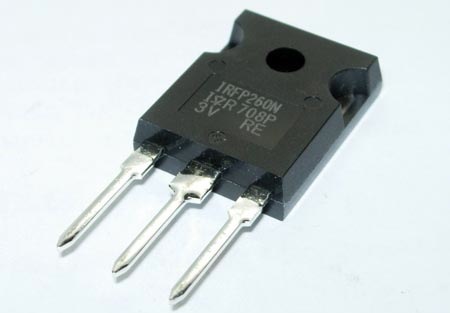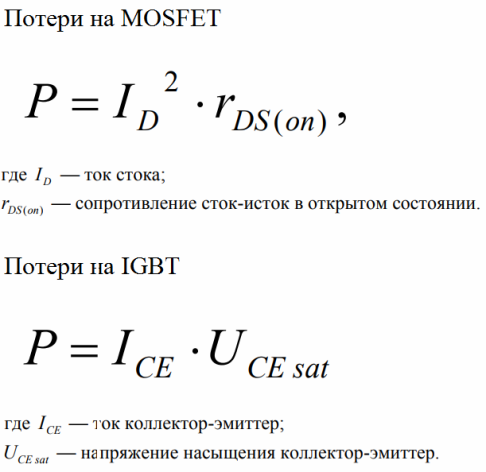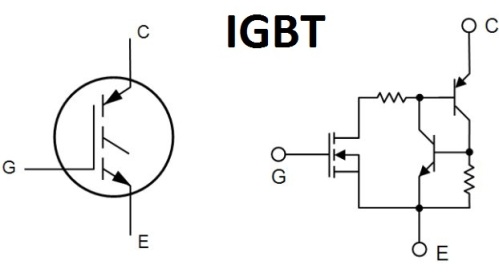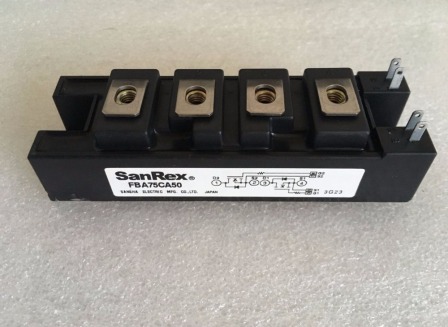Categories: Featured Articles » Practical Electronics
Number of views: 45548
Comments on the article: 7
Power MOSFET and IGBT transistors, differences and features of their application
Technologies in the field of power electronics are constantly being improved: relays become solid state, bipolar transistors and thyristors are being replaced more and more extensively by field-effect transistors, new materials are being developed and applied in capacitors, etc. - active technological evolution is clearly visible everywhere, which does not stop for a year. What is the reason for this?
This is obviously due to the fact that at some point manufacturers are not able to satisfy consumers' requests for the capabilities and quality of power electronic equipment: the relay sparks and burns contacts, bipolar transistors require too much power to control, power units are unacceptably a lot of space, etc. Manufacturers compete among themselves - who will be the first to offer the best alternative ...?
So, field MOSFET transistors appeared, thanks to which control of the flow of charge carriers became possible not by changing the base current, as in bipolar ancestors, and by means of the electric field of the shutter, in fact - simply by applying voltage to the shutter.

As a result, by the beginning of the 2000s, the share of power devices on MOSFET and IGBT was about 30%, while bipolar transistors in power electronics remained less than 20%. Over the past 15 years there has been an even more significant breakthrough, and classical bipolar transistors almost completely gave way to MOSFET and IGBT in the segment of controlled power semiconductor switches.
Designing, for example, high frequency power converter, the developer already chooses between MOSFET and IGBT - both of which are controlled by the voltage applied to the gate, and not by the current, like bipolar transistors, and the control circuits are simpler as a result. Let us, however, consider the features of these very transistors controlled by the gate voltage.
MOSFET or IGBT
In IGBT (IGBT bipolar transistor with insulated gate) in the open state, the working current passes through the p-n junction, and in MOSFET - through the drain-source channel, which has a resistive character. Here, the possibilities for power dissipation are different for these devices, the losses are different: for a MOSFET fieldman, the dissipated power will be proportional to the square of the current through the channel and the channel resistance, while for IGBT the dissipated power will be proportional to the collector-emitter saturation voltage and the current through the channel in the first degree.

If we need to reduce key losses, we will need to choose a MOSFET with a lower channel resistance, but do not forget that with increasing semiconductor temperature this resistance will increase and heating losses will still increase. But with IGBT, with increasing temperature, the saturation voltage of the pn junction, on the contrary, decreases, which means that heating losses decrease.
But not everything is as elementary as it might seem at the sight of a person inexperienced in power electronics. The mechanisms for determining losses in IGBT and MOSFET are fundamentally different.
As you understand, in a MOSFET transistor, the channel resistance in the conductive state causes certain power losses on it, which, according to statistics, are almost 4 times higher than the power spent on gate control.
With IGBT, the situation is exactly the opposite: losses on the transition are less, but the energy costs for management are greater. We are talking about frequencies of the order of 60 kHz, and the higher the frequency, the greater the loss of gate control, especially with regard to IGBT.

The thing is that in MOSFET minority carriers do not recombine, as happens in IGBT, which includes a MOSFET field-effect transistor that determines the opening speed, but where the base is not directly accessible, and it is impossible to speed up the process using external circuits.As a result, the dynamic characteristics of IGBT are limited, and the maximum operating frequency is limited.
By increasing the transmission coefficient and lowering the saturation voltage, let’s say we lower the static losses, but then we increase the losses during switching. For this reason, manufacturers of IGBTs indicate in the documentation for their devices the optimum frequency and maximum switching speed.
There is a drawback with the MOSFET. Its internal diode is characterized by a finite reverse recovery time, which in one way or another exceeds the recovery time characteristic of internal anti-parallel IGBT diodes. As a result, we have switching losses and current overloads of the MOSFET in half-bridge circuits.
Now directly about the dissipated heat. The area of the semiconductor IGBT structure is larger than that of the MOSFET, therefore, the dissipated power of IGBT is greater, however, the transition temperature increases more intensively during the operation of the key, therefore, it is important to choose the radiator to the key correctly, correctly calculating the heat flux, taking into account the thermal resistance of all boundaries assembly.
MOSFETs also have higher heating losses at high power, far exceeding the IGBT shutter loss. With capacities above 300-500W and at frequencies in the region of 20-30 kHz, IGBT transistors will prevail.

In general, for each task they choose their own type of key, and there are certain typical views on this aspect. MOSFETs are suitable for operation at frequencies above 20 kHz with supply voltages up to 300 V - charging device, switching power supplies, compact inverters of low power, etc. - the vast majority of them are assembled today at MOSFET.
IGBTs work well at frequencies up to 20 kHz with supply voltages of 1000 volts or more - frequency converters, UPSs, etc. - these are the low-frequency segment of power equipment for IGBT transistors.
In the intermediate niche - from 300 to 1000 volts, at frequencies of the order of 10 kHz - the selection of a semiconductor switch of the appropriate technology is carried out purely individually, weighing the pros and cons, including price, dimensions, efficiency and other factors.
Meanwhile, it is impossible to say unequivocally that in one typical situation IGBT is suitable, and in the other - only MOSFET. It is necessary to comprehensively approach the development of each specific device. Based on the power of the device, its mode of operation, the estimated thermal regime, acceptable dimensions, features of the control circuit, etc.
And most importantly - having chosen the keys of the required type, it is important for the developer to precisely determine their parameters, because in the technical documentation (in the datasheet), by no means everything always exactly corresponds to reality. The more accurately the parameters are known, the more efficient and reliable the product will turn out, regardless of whether it is IGBT or MOSFET.
See also:Bipolar and field effect transistors - what is the difference
See also at i.electricianexp.com
:

